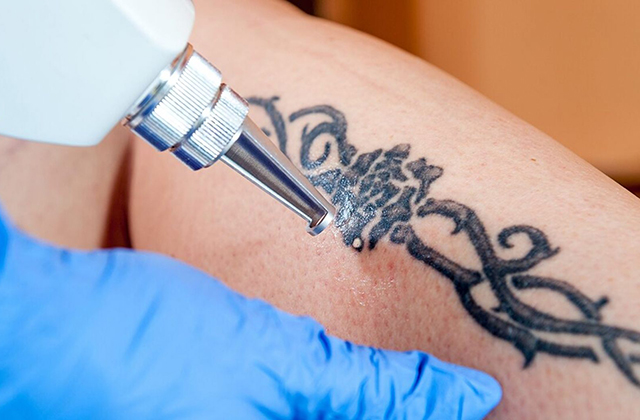If you love working with children and want to help them grow and develop then early childhood education courses Sydney is right one for you. I’ve seen a lot of people asking where they can get transcription training so they can start working at home as a general transcriptionist. There are a couple of different thoughts on the idea of transcription courses and if any do exist, are they worth the money to pay for them.
First, some people think that if you can type fast and listen to a recording well, that is all there is to being a general transcriptionist. And there are some people that are just naturals; they learn quickly how to use the software and other tools and they start right in on picking up work within a couple of days.
There are others who start in this business after getting their transcription training on the job with a former employer. They’ve already been doing transcription for a while and simply have to adapt to being home-based. In these two instances, paying for transcription courses isn’t really necessary.
But what if you’re just hearing about general transcription? You have a little above average typing skills and maybe some office experience and you’d just like to do this from home. So, how do you learn? Where can you find general transcription training? This is where you need to use your best judgement and decide if paying for a transcription course is really necessary.
Business Schools or Community College Courses
First, there really is no way to “train” to do general transcription. Business schools, community colleges, adult learning classes, etc. do not offer training in general transcription. So if you decide you need hands-on training in a formal setting, you’ll have to take a transcription training course in either medical transcription or legal transcription, then adapt what you’ve learned into the general field.
And why is that? Because general transcription is just that – General. It’s wide open to any industry and any individual. Unlike the medical and legal fields, there are no industry specific set ways of typing information into specific templates.
For instance, you may do a corporate transcript one day in one format, then do a personal journal the next day in another format. Every client will want their documents set up a different way. And in fact, the same client may want several different formats depending on what their needs are! You simply cannot use one or two different templates and expect them to fit across the board with all of your clients. It just doesn’t happen.
You may even get a client who says, ‘Just set it up how you think is best,’ and you get to be creative.
So where the medical and legal industries have certain criteria to meet with their documentation, there is no one right way or industry specific standard in the general transcription field because the field is wide open to anything that isn’t medical or legal.
But that’s not to say that getting transcription training in the medical or legal field won’t be a benefit. If you have the time and money or can get grants or loans for formal education, you absolutely will benefit from it. You’ll get a solid education in medical and legal terminology and you’ll learn how to listen and type at the same time. You’ll get used to different speaker accents and you’ll learn to use your software programs.
So absolutely, if you can do it and want to do it, check your local community college for transcription courses in one of those two fields.
Online Courses and Programs
Now, what if you don’t have the time to attend an in-class session during the week? Are there transcription courses or transcription programs available online?
Personally, I know of only a couple and I haven’t checked on them to see how thorough they are. But if you find a course online, there are a few things you will want to make sure it will cover. You will want to make sure that you will be shown a wide variety of sample document formats to type the recordings in. This will help you learn how to set up your word processing program. But keep in mind, these are just samples. No one can know what your specific clients may want.
The transcription training program needs to teach you the software and equipment you’ll need to get you to work as quickly and efficiently as you can to ensure you make the most money for your efforts.
A good transcription training course will also show you the steps you need to take to set up your own transcription business. You will need to be proficient in Microsoft Word and Excel, as well as learning the new software you will need to pick up for your business procedures.
It should not only provide you with several sample digital audio files you can practice with, but also where to find more samples online, such as business podcasts to download and practice with. The transcription course you choose should also include a section that shows you how to record a webcast or podcast from the Internet using digital audio recording software, and a brief section on how to convert a physical cassette tape to a digital file.
And finally, you should learn how to use AutoCorrect and other keyboard shortcuts that will help you with your typing speed. So, while taking a formal course in transcription training can be costly without getting a college grant, finding a decent course online or simply learning by doing does not have to be expensive. With a little research and effort, you should be able to be finished and on your way to working from home in as little as a few months time.
And remember, having the freedom to work at home with a business that is growing in demand will provide you with the means to enjoy your family, avoid the stress of the average workplace, and give you a sense of pride that you can only achieve from being your own boss.
Karen Musselman is a work from home Baby Boomer grandma who writes articles for her blog, Working At Home [http://ksmusselman.com] With KSMusselman. Karen also has an ebook on Kindle book about working from home providing transcription services which you can learn more about on her blog.
Article Source: https://EzineArticles.com/expert/Karen_S_Musselman/82612
Article Source: http://EzineArticles.com/3498592


